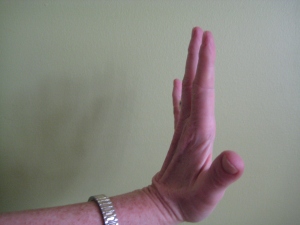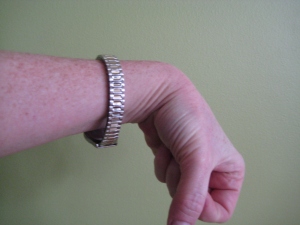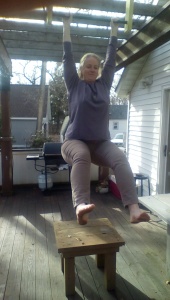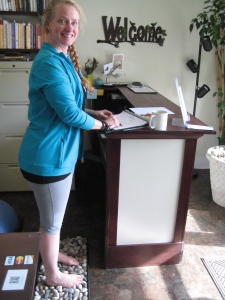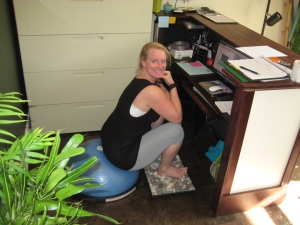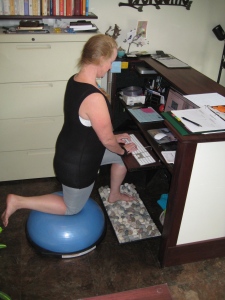“Your holiest pain might come from your yearning to change yourself in the exact way you’d like the world around you to change.”
This was the last entry in my journal prior to arriving at Kripalu Retreat Center in Western Massachusetts. I don’t know the source or remember why I wrote it down. But it was applicable for my whole experience of this intense week. Throughout my stay I was nourished in many ways, including excellent teachers, amazing food, and an incredibly beautiful view of the lake and surrounding mountains. I was strengthened by an ever more apparent understanding that I am moving in the right direction in my journey of teaching, work, and life. Finally, every one of the participants were challenged to look deep into their place of pain, no matter where it resides within ourselves and our culture–in order to really find our paths, difficult as they may be, to make the world a better place.
Being Medicine
Generally, when we think of medicine, we imagine a person with the identity of doctor or other health practitioner dispensing treatments or advice. However, EVERYTHING in our lives, including persons, places, or events, can have a healing or toxic effect on our health. My morning sessions with Dr. Claudia Welch were particularly moving and healing to me. Over the years I have struggled deeply with my identity as a healer–an identity that I don’t really reverberate or relate to–even though ultimately I feel that what I do as a teacher and health practitioner is healing. In fact, Claudia advised us not to “become anything,” because the attachment to an identity can hold us back from our own growth and healing. So, instead of being an identity, I learned how to be an action: to become medicine.
What does it mean to become medicine? In Ayurveda, anatomy is depicted in a very different way from Western anatomic understanding. Rather than having specific muscles, bones, or fascia, the dhatus, or layers of anatomy, organize and flow around the direction of prana (life energy). Prana, in turn, moves in the direction of focus. A good illustration of this might be that if we don’t move a part of ourselves, say an arm, the organization of the tissues changes. As energy leaves bones become fragile, muscles atrophy, and fascia becomes thick and stiff. On the other hand, one might go to the gym and build muscle, strengthen bones, and keep the fascia fluid. Although the arm is still an arm, the anatomy within it is not a set pattern; it evolves due to our focus and energy. This means that actions can either be healing (if it creates a flow of prana) or toxic (if it creates disruption).
The first dhatu is rasa. Rasa is the juiciness of life and has to do with how our mouth waters for the taste of good food. It is also all of the fluid in our body that is found in the interstitium (the spaces of fascia), tears, and the plasma part of our blood. Since form and appetite are influenced by attention, then it matters where we focus our minds! Prana follows focus and focus creates flow. To become medicine, stay focused on what is most important in your heart. Allow for a fluid relationship as to how you pattern your life. Live without undue attachments to identities that cause tension or disruption in the flow of energy.
There is nothing to dispense. I am not a healer. Rather, the teaching is to focus on being medicine myself and in doing so, the flow and organizational power of prana travels from and through me and becomes medicine for all.
Being Magic
One of the more delightful sessions I encountered was with Vicki Nobles and her Motherpeace Tarot cards. She offered a unique intersectionality of mythology, anthropology, astrology, archeology, and modern culture. Her work on the tarot began in the 70’s with a partner in Berkley. Together they set out to reclaim the feminine spiritual magic that they saw rooted in tarot, but not depicted on most decks. The Motherpeace Tarot came out in 1981 and through the years it eventually became obscure. That is until Christian Dior’s fashion designers decided to do a show based on feminist themes and contacted Vicki on the eve of her 70th birthday to ask if they could use her art as a part of their new line. Today her images are featured throughout the world on incredible one of a kind Dior designs. She believes this is one way magic is spreading and therefore reorganizing the flow of energy toward a more feminist culture.
One of the realizations I had about my experience last week came after I arrived home. My goal for the week was to be a student again, but not in order to pass a test or become in any way certified. I wanted simply to explore and learn. As a teacher I am in charge of timekeeping. Since there are no clocks in our studio space, my way of doing that job is to wear a watch. When I went to security for my flight out, I had to remove the watch from my arm. Later, I found that the watch stopped working the moment I passed through that portal. It was as if I was being guided, maybe by magic, to let go of timekeeping and the identity of a teacher.
I sat down to try the tarot a couple of times after purchasing a deck. Both sessions I did with the cards during the week were really quite inspiring and transforming. Magic even. Perhaps Vicki is right. The magic in my life is spreading and through it I am growing in fluid and surprisingly sweet ways.
Revolutionary Love
Our opening speaker was Valerie Kaur. Her words resonated throughout the week–and her urge to put love into practice was truly tested. This week’s plenary speakers did not mince words. This was not a touchy-feely retreat. This week was personal and political. Sean Corn, another plenary speaker, shared her own commitment to an inner revolution, summing it up nicely: “What happens on the mat is NOT a recipe to bypass, it is the opposite, to MAKE us be present.” Being present and taking action become more difficult the more we are stuck to being “something” and having an identity that is removed from heart focused prana.
Valerie urged us to take on the three revolutionary love practices. You can find out more about her work at The Revolutionary Love Project:
- See no strangers and accept them as a part of YOU that you have not yet met. Listen to their stories.
- Tend the wounds of our culture and world. Be committed to changing toxic systems for lasting reform. No action is too small–use your particular skill set and move in love.
- Wish for others a life that you would wish for yourself. This means that it is totally okay to take time out, because you would want anyone who is going through a challenge to rest as well. This is very different from privileged escapism.
At some point, whether it was from speaking deeply, seeing one another as they wish to be seen, feeling pain, or hearing difficult stories–at some point, all of the attendees were moved into a place of revolution within. Valerie’s advice is to take on the words of a midwife: breathe and push. Holy pain. Within the birth experience there is a sense of love and sacrifice and magic that is also birthed in that moment and it is truly revolutionary.
Finding Our Way
The last morning of the week involved a panel discussion with all of the major teachers from the sessions (not including the plenary speakers). It was my first time to connect with Angela Farmer during the retreat. She depicted her yoga practice at the beginning of her career as a “straight narrow path up a very steep mountain.” She eventually turned away from such an extremely disciplined practice and life. Now she embraces a way of being that is more curious and individualistic–an understanding that there are many paths to explore in this journey up the mountain. “Remember that there are roots underground that connect us, but above ground we are all separate.” I spoke with a few people who were in her daily morning sessions and they were both pleased and relieved that they could make yoga their own journey and allow for individual exploration and evolution.
Since the path isn’t straight and narrow it is okay, and maybe even necessary, to ask for help. In fact sometimes it is the only way to “see” our way. One of the teachers, Toni, described an exercise she did while on a leadership retreat. Everyone was blindfolded and placed into a maze. The only instructions were to find the way out of the maze without removing the blindfold. Names of participants were called out as they succeeded. Toni described herself as very competitive: “I had a poster in my bedroom as a teenager that said ‘winning silver means you lost the gold.'” Several times Toni was asked quietly if she needed help to navigate the maze; “NO!” was her emphatic response. She was determined to do this and win. Name after name was announced and still Toni struggled to figure out how to get out of the maze. Finally, when asked gently once more if she needed help, she said yes. “Toni is out of the maze,” came the immediate announcement. No longer attached to being a winner, becoming someone who could ask for help was Toni’s medicine.
How many of us feel the need to both find our own way, while also getting help? Isn’t that the meaning of a true community? When all are welcomed, guided and supported as needed, we become medicine for one another.
Belonging is not Attachment
After the week at Kripalu, I was able to visit some dear friends in nearby Concord, Massachusetts. Stephanie and I met when she was in the midst of relocating and starting her Doctorate of Divinity at Harvard. She was a single mom with a young son and lived in Spring Lake during the interim–we met at church and got to know one another more deeply through a women’s group. We realized during this particular visit that while we’ve only lived in proximity to one another for about a year, our friendship has lasted almost two decades. Our lives have grown apart, but our sense of belonging to one another has remained.
Stephanie is a now a minister at a United Universalist congregation and was speaking on the theme of belonging the Sunday of my visit. She told the story of our meeting and that I had invited her to brunch after church. My husband and I fed her. Made her feel like she belonged to a community. Offered help in the maze of her life at that time. Listened to her story. As she shared her gratitude about our time together, I felt once again tears rolling down my cheeks, the umpteenth time over the last week. Remember, tears are a part of rasa dhatu. They are the result of focusing on that which is most meaningful to our hearts.
This was medicine–the experience of an old friendship that gives us a sense of belonging to a community. Medicine was the experience, teaching, and making new friends at Kripalu too. All of this created a focus and fluidity to move me into new and maybe even revolutionary space which only became open when I released the attachments which were holding me back. That was true for Stephanie, Toni, Angela, Sean, Valerie, Claudia, and everyone at the retreat. It was holy and not without pain. But it was healing.
Who was healing whom? We all were. We were and are medicine for one another. Focus on being strength, nourishment, and support for each other and watch the magic spread. We can start a revolution.

